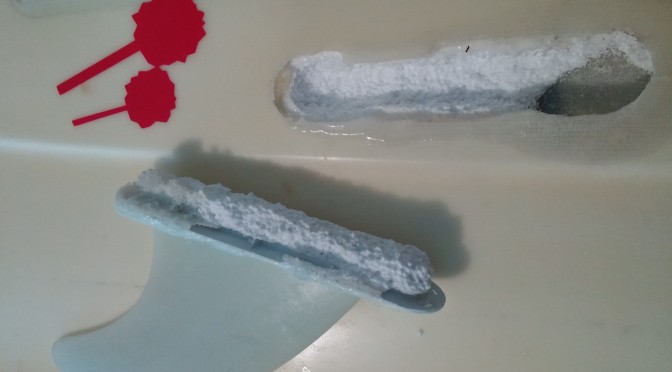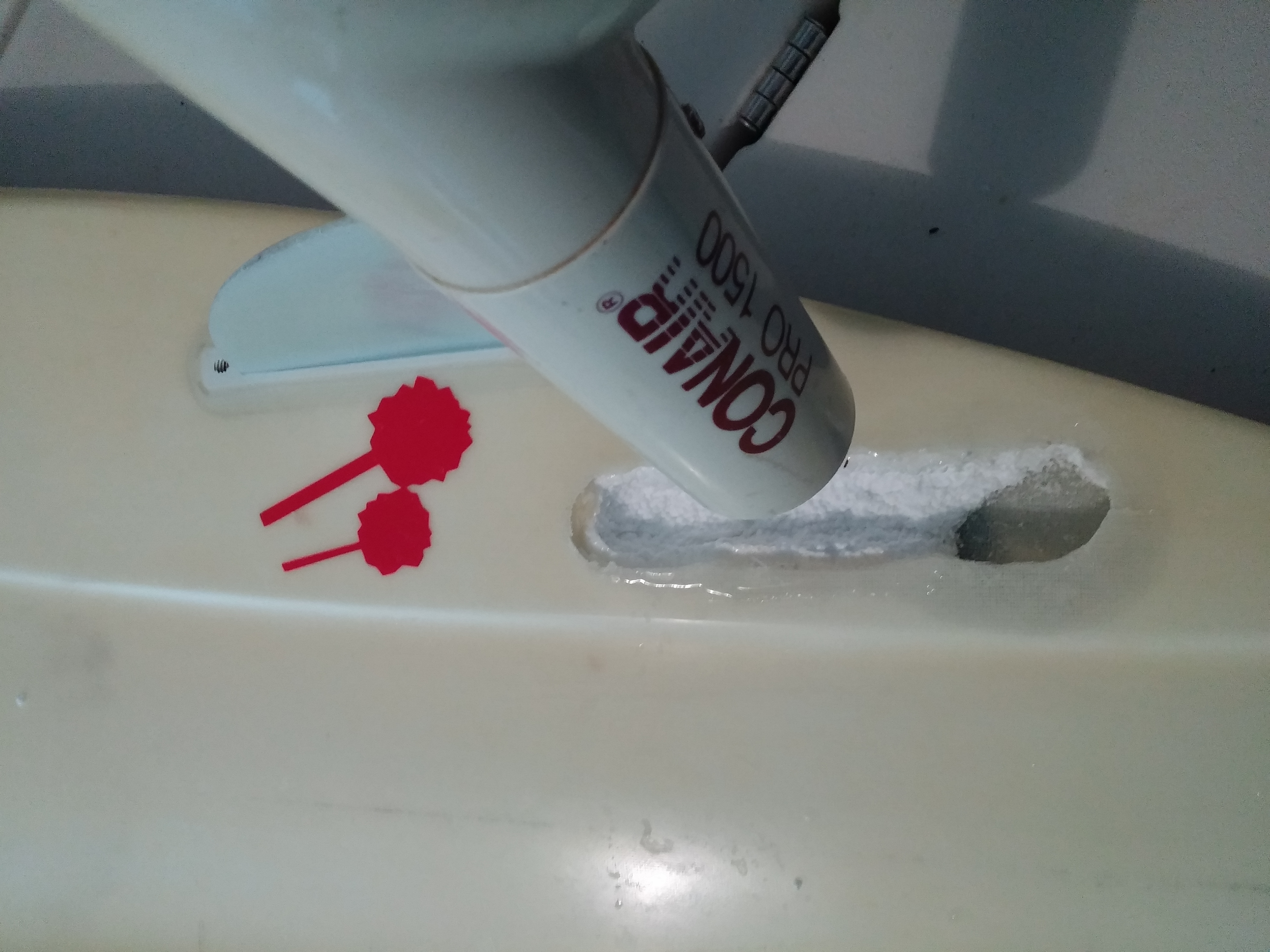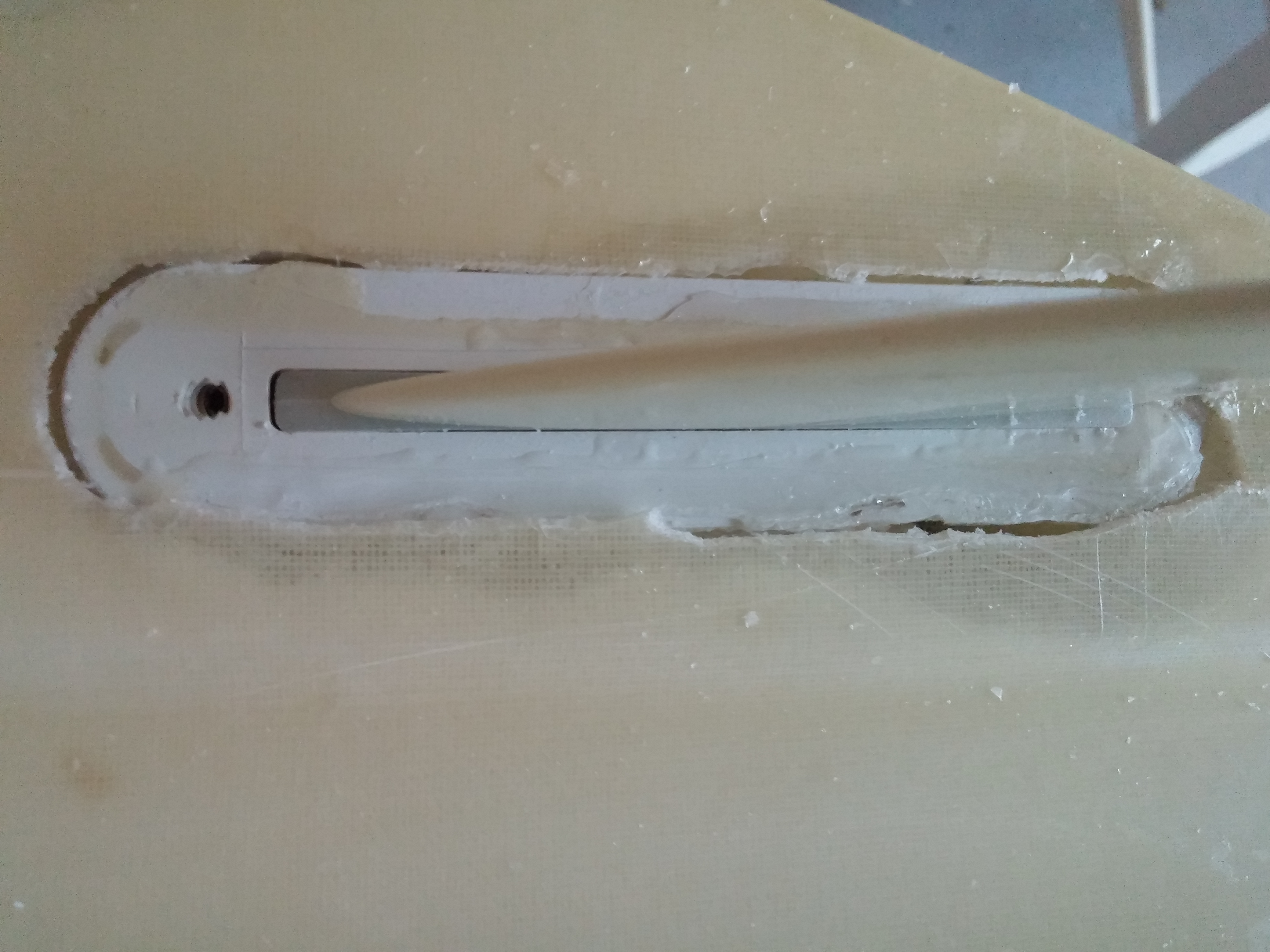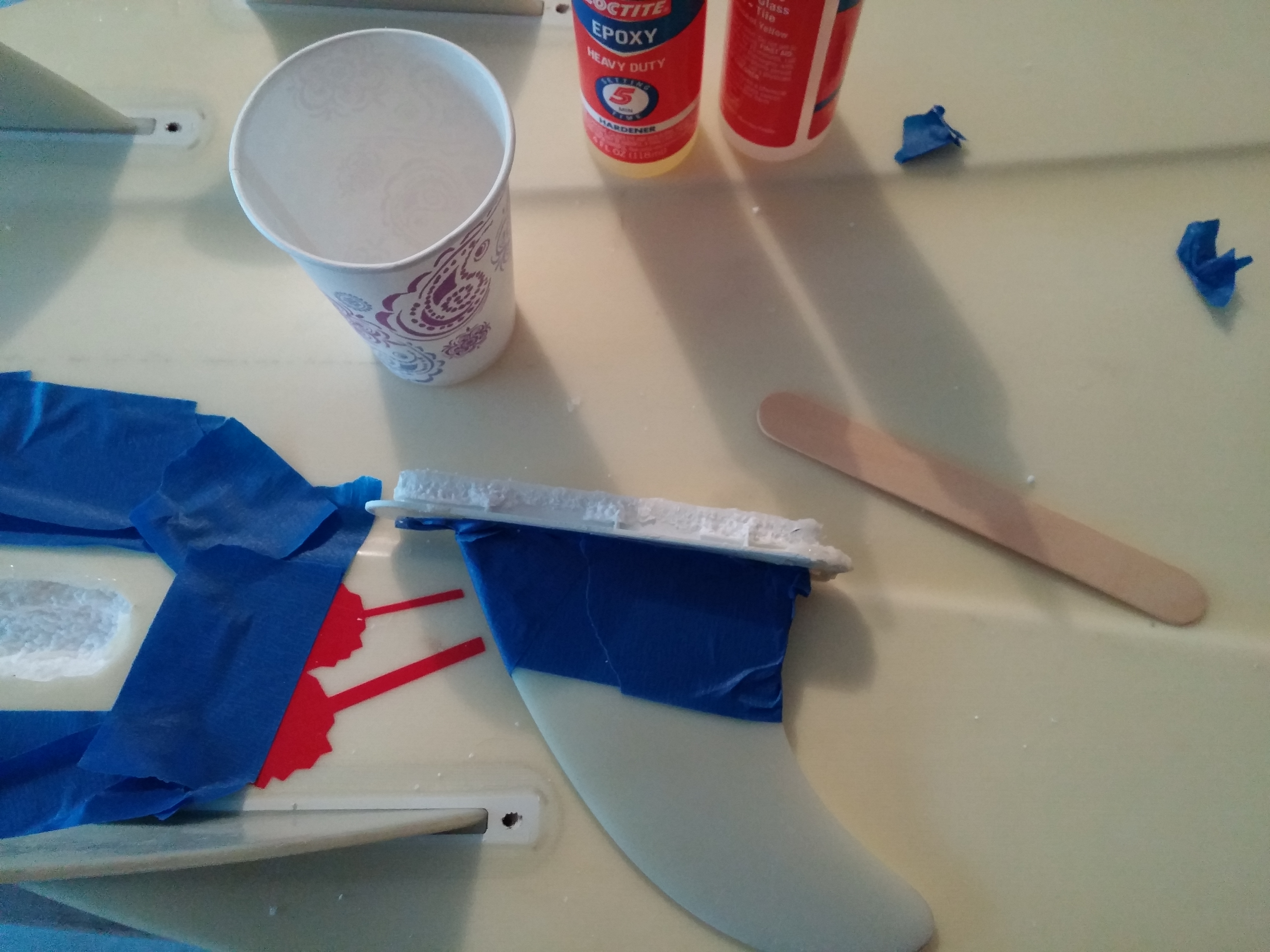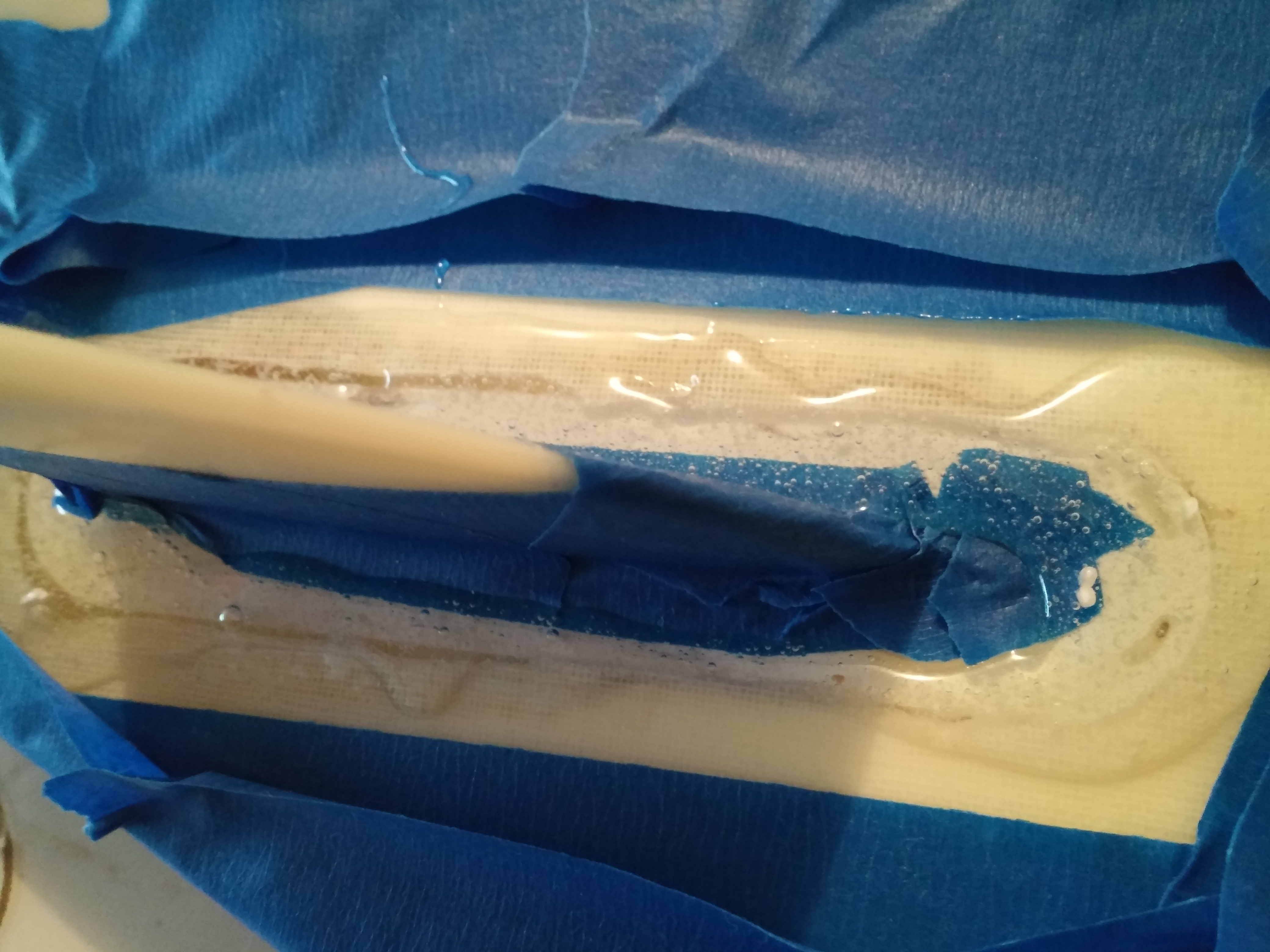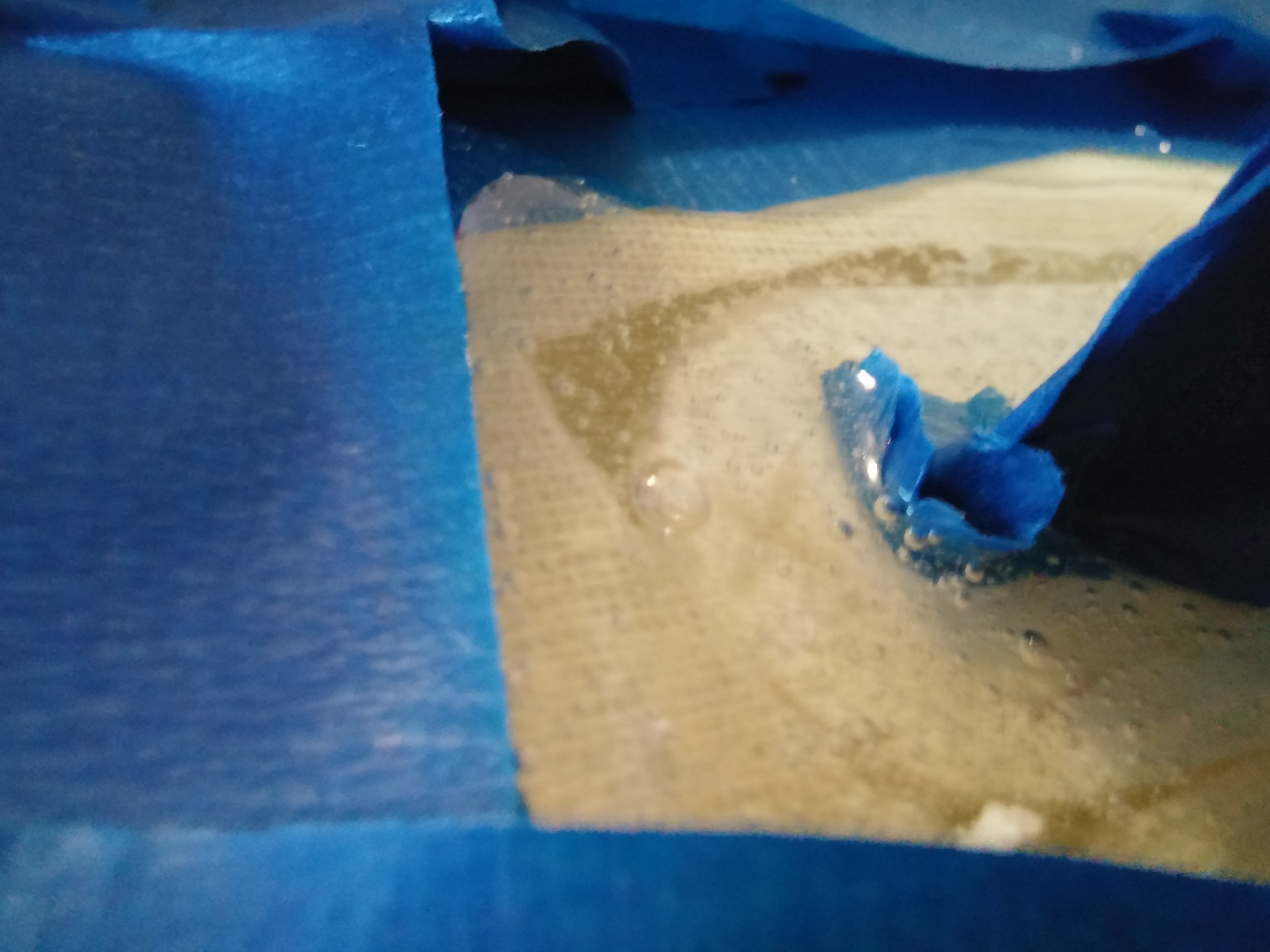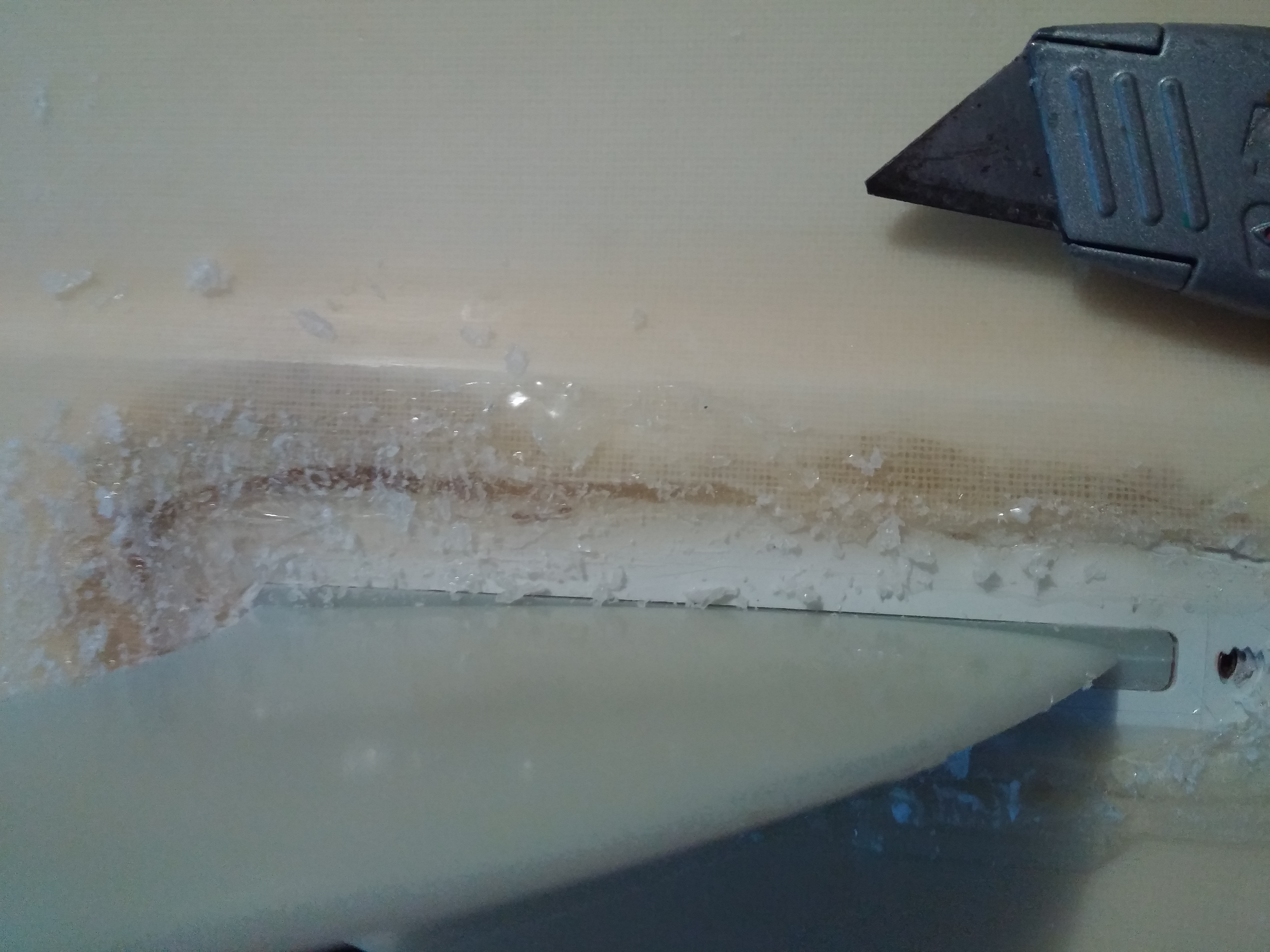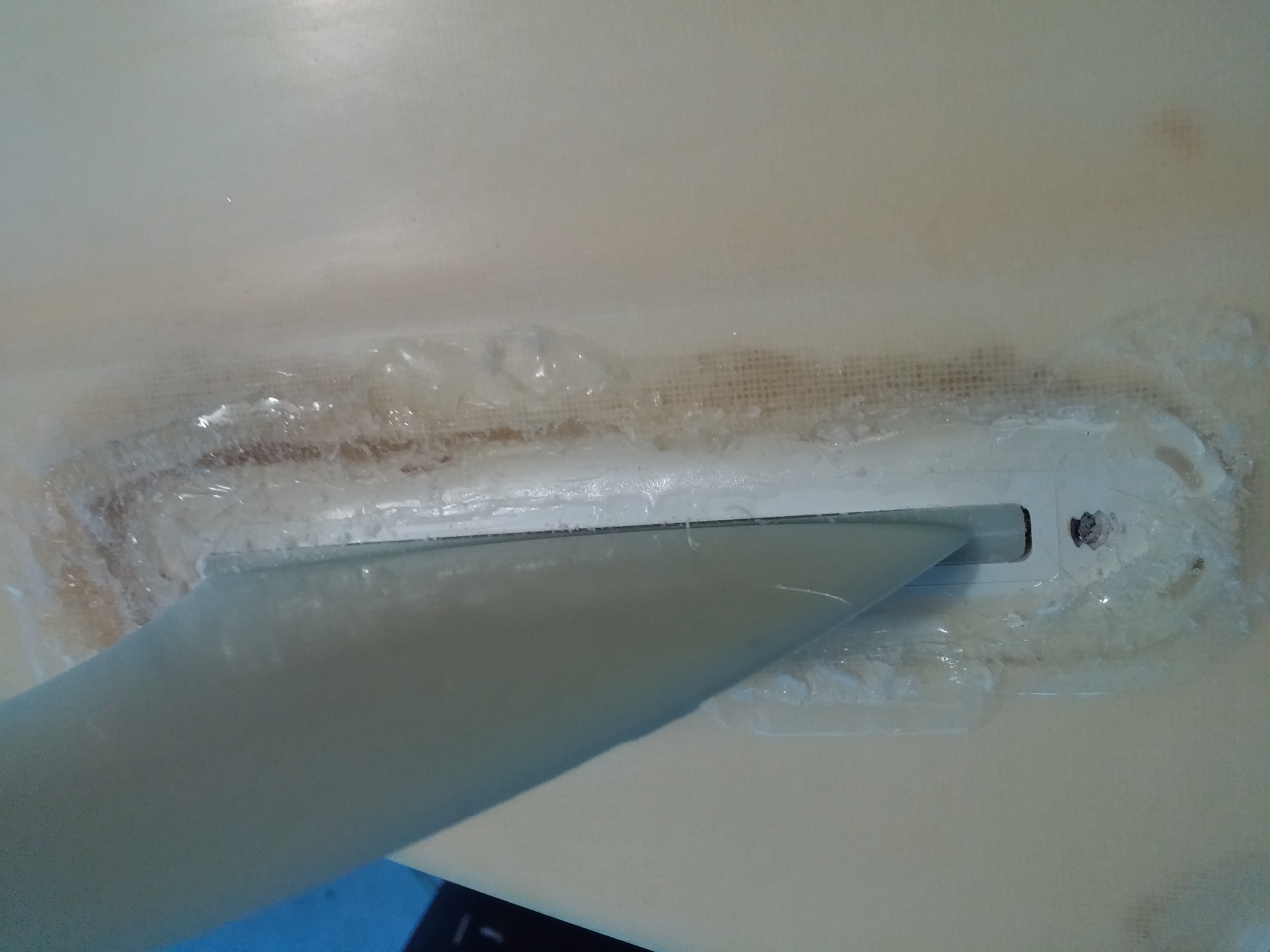Surfboard Repair: A Flat Tire
Surfboard repairs vary in size and difficulty. Many can be far more complex and require more steps than others. Some are very simple repairs. Here you can read about one of the more complex repairs.
Have you experienced a flat tire lately? A flat tire, when talking about surfboards, is a damaged or broken fin, or fin box. For this particular repair, the board landed on another board. The fin broke the fall, and was jostled so vigorously it was dislodged from its fixture in the board. The fin and the fin box separated from the foam and fiberglass. Water was entering the surfboard through the significant crack. The fin was also realigned. The board couldn’t be surfed. Further surfing the board would have completely dislodged the fin and fin box. This is one of the more complex, but possible repairs. And because the board was constructed with polystyrene foam(the standard for epoxy resin), this repair required epoxy resin and hardener.
Using polyester resin(fiberglass board resin) on polystyrene(epoxy board foam) will not effectively fix the repair, because the heat generated from the curing of polyester resin will melt the polystyrene foam. You must use the proper materials specific to the construction of the board. Typically epoxy resin can be used on either fiberglass or epoxy boards, but fiberglass resin can only be used on fiberglass boards. As a rule of thumb, most boards called fiberglass surfboards are constructed of polyester resin and hardener, and polyurethane foam. Most boards called epoxy boards are constructed of epoxy resin and hardener, and polystyrene foam.
And on a side note, Epoxy is less harmful to the respiratory system and to the environment than polyester resin and fiberglass cloth. While polyester resin cures the vapors from the resin can be harmful to the respiratory system. Additionally, when it is sanded, it can become air-born, and can be harmful to the respiratory system if inhaled. The cloths used to strengthen surfboards are also quite harmful to the respiratory system, and should be avoided whenever possible. Repairs should be completed with resin only and limited sanding, whenever possible.
This more complex repair took around an hour. The major steps are shown below:
Ensure there is no water in the repair:
Prep the repair (Sand edges to ensure bonding. Make sure the fin can easily be placed into the repair. Remove dust.):
Prep the repair with tape to limit resin overflow:
Prep the fin. Ensure you can remove the fin from the fin box after the repair is complete. This can be accomplished by putting tape over the fin. (But, you must remove the tape before the resin completely cures.):
Mix the resin. You will have approximately 5 minutes until the resin has begun curing and around 20 minutes until the complete cure. Fill the area with resin:
Place the fin:
Wait for the resin to partially cure. During the breif waiting period pop the large bubbles that are generated from the curing and setting process. After the resin has partially cured (you can determine if it is partially cured by trying to remove your mixing stick from the extra resin in the cup. You’ll be able to see that the stick will be stuck to the extra resin), remove all the tape.:
Use an exacto knife to trim the area while the resin is still curing, and while it is still partially soft. This will eliminate the need to sand the repair. At this trimming stage, ensure you can remove the fin by trimming resin close to the fin.:
Wipe off the resin you’ve trimmed after it is mostly hardened. You can use a paper towel. Then your done. This one didn’t turn out pretty, but it will do the trick. The repair will be surfable in 20 minutes. The resin will continue to cure at a super slow rate for the next 24 hours, but the major curing is complete after 20 minutes.
